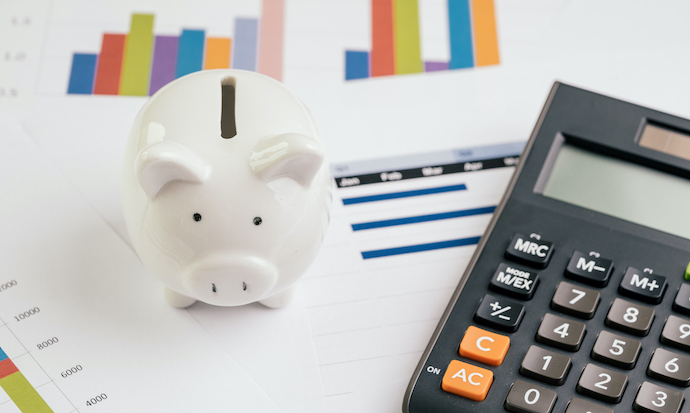What the New Rebate Rule Means for Medicare Part D Plans, MCOs
The finalized rebate rule would prevent pharmacy benefits managers and Medicare Part D plans from receiving pharmaceutical manufacturers’ rebates except in certain situations.

Source: Getty Images
- The Department of Health and Human Services has released its finalized rebate rule which changes safe harbors around prescription drug pricing, impacting Medicare Part D plans and certain Medicaid managed care organizations as well as other healthcare stakeholders.
Payers have been vocal against reducing safe harbors for rebates. Now however, they will have to prepare for the law to potentially go into effect in January 2022.
What are the Anti-Kickback Statute safe harbors?
The Anti-Kickback Statute disallows organizations that are in charge of federal health care programs from receiving any kind of reward for giving business to specific vendors.
For example, in 2018, a whistleblower came forward alleging that Humana and Roche Diagnostics had violated the statute. According to the whistleblower, Humana was about to kick Roche Diagnostics off of Humana’s Medicare Advantage formulary.
In response, Roche offered an overpayment that Humana owed if Humana would keep Roche’s products on the payer's formularies. Eventually, Humana agreed, paid Roche $11 million of the $45 million overpayment, and retained Roche’s glucose monitor products.
READ MORE: Top Strategies For Driving Down Prescription Drug Spending
The case—which began in 2014—does not appear to have been closed as of November 2020.
However, there are exceptions to the Anti-Kickback Statute called “safe harbors.” Discounts, for example, are not considered in violation of the Anti-Kickback Statute as long as they meet certain criteria.
What is the new rule?
The new rule excludes prescription drug rebates from safe harbor and institutes two new safe harbors.
The first safe harbor is for drug price discounts for the consumer at the pharmacy counter.
The second safe harbor protects arrangements between manufacturers and pharmacy benefit managers that are fixed-fee services arrangements—a practice that often occurs in government contract bids in which the services and final price are agreed upon upfront.
READ MORE: Managed Care Organizations Lead to 27% Lower Prescription Costs
“Point-of sale discounts will lower out-of-pocket costs for patients using drugs with high prices and high rebates, particularly during the deductible or coinsurance phases of their benefits,” the HHS fact sheet explains. “This rule changes the incentives in our system that reward list price increases.”
How does the finalized rule differ from the proposed rule?
The finalized rule differs from the proposed rule in four ways.
First, the effective date has been bumped back to January 1, 2022, as opposed to January 1, 2020, to give payers, manufacturers, and other relevant entities time to enact changes.
Second, the department clarifies some of the confusion around whether the safe harbors included price reductions for Part D plan sponsors or certain Medicaid managed care organizations that require formulary placement. The new rule certifies that these price reductions are permissible.
Third, HHS decided to continue offering safe harbor for rebates that pharmaceutical manufacturers negotiate with Medicaid managed care organizations if the arrangement meets all requirements. The safe harbor also extends to reductions at the pharmacy counter for prescription drugs.
READ MORE: CMS Reveals Low Part D Premium, AHIP Warns of Rebate Rule Impact
Fourth, the finalized rule clarifies the new policy’s chargeback implications.
How will this affect health plans?
According to HHS, the new rule will lead to lower Medicare Part D spending.
While HHS acknowledges that the rule may lead to premium increases, the department argues that out-of-pocket health care spending reductions will offset any premium increases.
The rule gives Congress more leverage to crack down on remunerations that pharmaceutical companies may give to payers under the guise of payment for non-federal healthcare program business when it is actually in return for federal healthcare program business.
“The new system will work as insurance is intended to: where those with especially high out-of-pocket drug costs will be most likely to benefit,” HHS states.
However, America’s Health Insurance Plans (AHIP) foresees a different outcome for health plans and their members.
“While pharma manufacturers would have you believe rebates are a problem and have pushed the Administration’s ‘rebate rule,’ time and time again, economists and analysts have found that the rule takes us in the wrong direction by increasing costs and premiums,” Matt Eyles, president and chief executive officer of AHIP, said in a statement.
Primarily, payers have focused on the premium uptick that HHS anticipates. Premiums for Medicare beneficiaries will escalate by 25 percent, Eyles predicted.
“This rule threatens health care affordability just as Americans are continuing to battle the COVID-19 crisis and its impact on their health and financial stability,” Eyles added.
Studies on the rule's impact on premiums have affirmed that premiums would be higher, but have also indicated that members will experience net savings overall.
A Milliman report stated that members would see higher premiums but that these would be offset by cost-sharing decreases.
A Wakely report determined that members' net savings would be two percent, despite premium increases of around eight percent.
And the Office of the Actuary found that household spending on premiums would increase by $50 billion, but also that household out-of-pocket savings would amount to $93 billion resulting in net savings for households of $43 billion total.
In July 2019, the White House appeared to back away from the policy, citing potential health insurance premium implications.
However, a year later in 2020, the White House signed an executive order that directed HHS to move forward with narrowing safe harbors for drug discounts.
Prescription drug prices were expected to increase by 3.8 percent in 2020.
